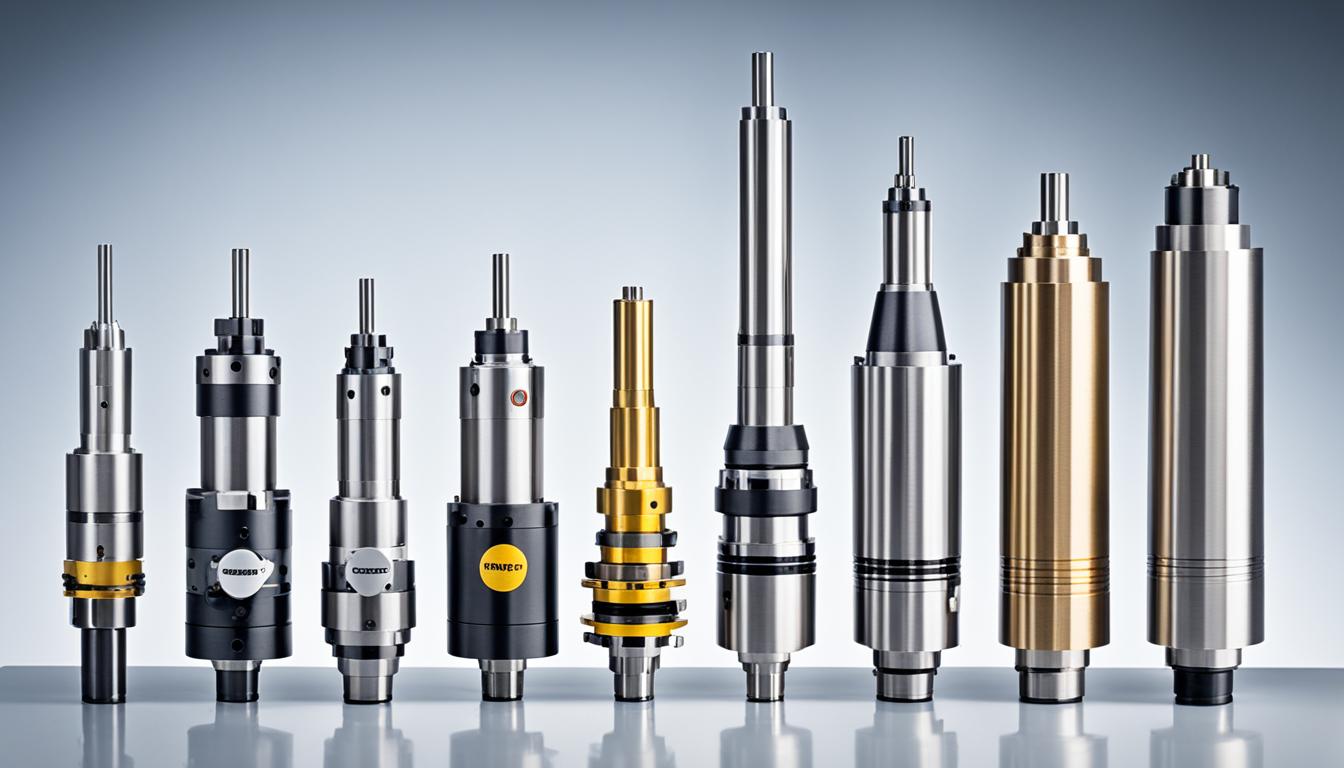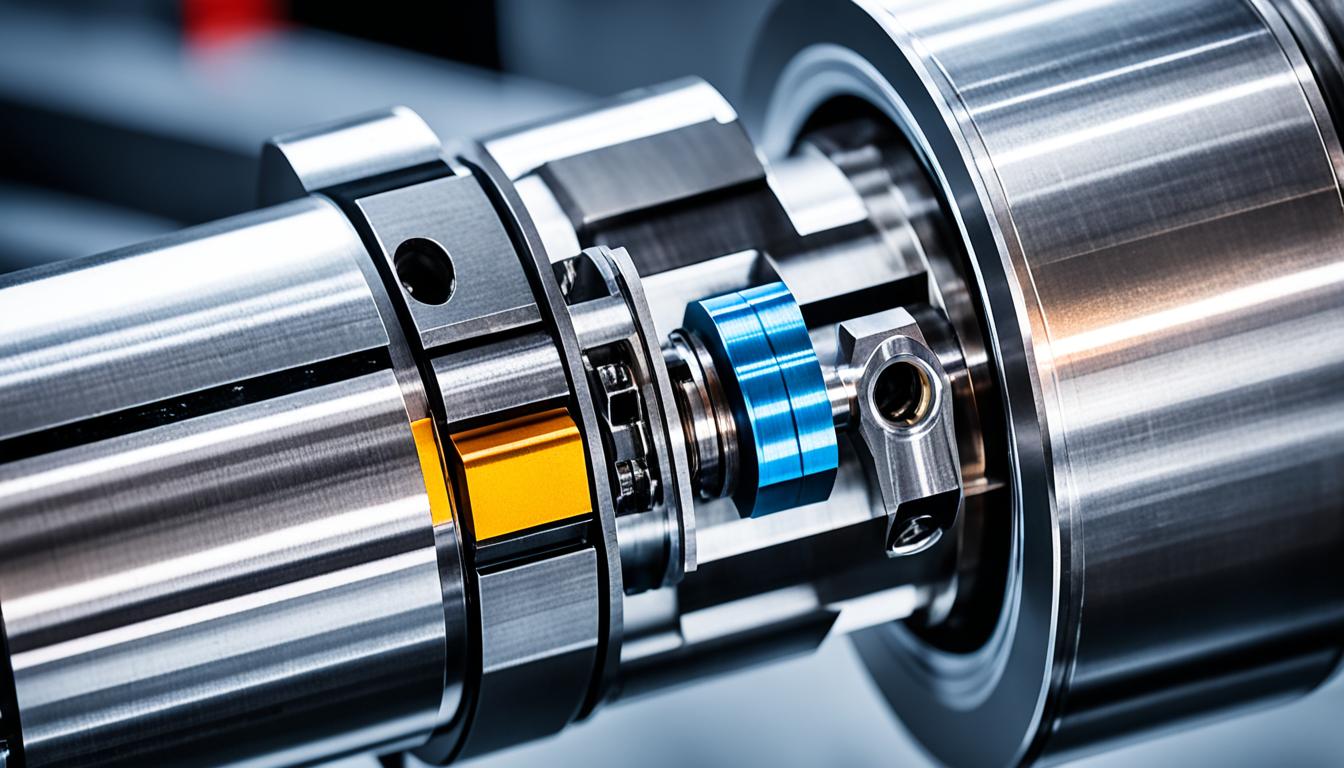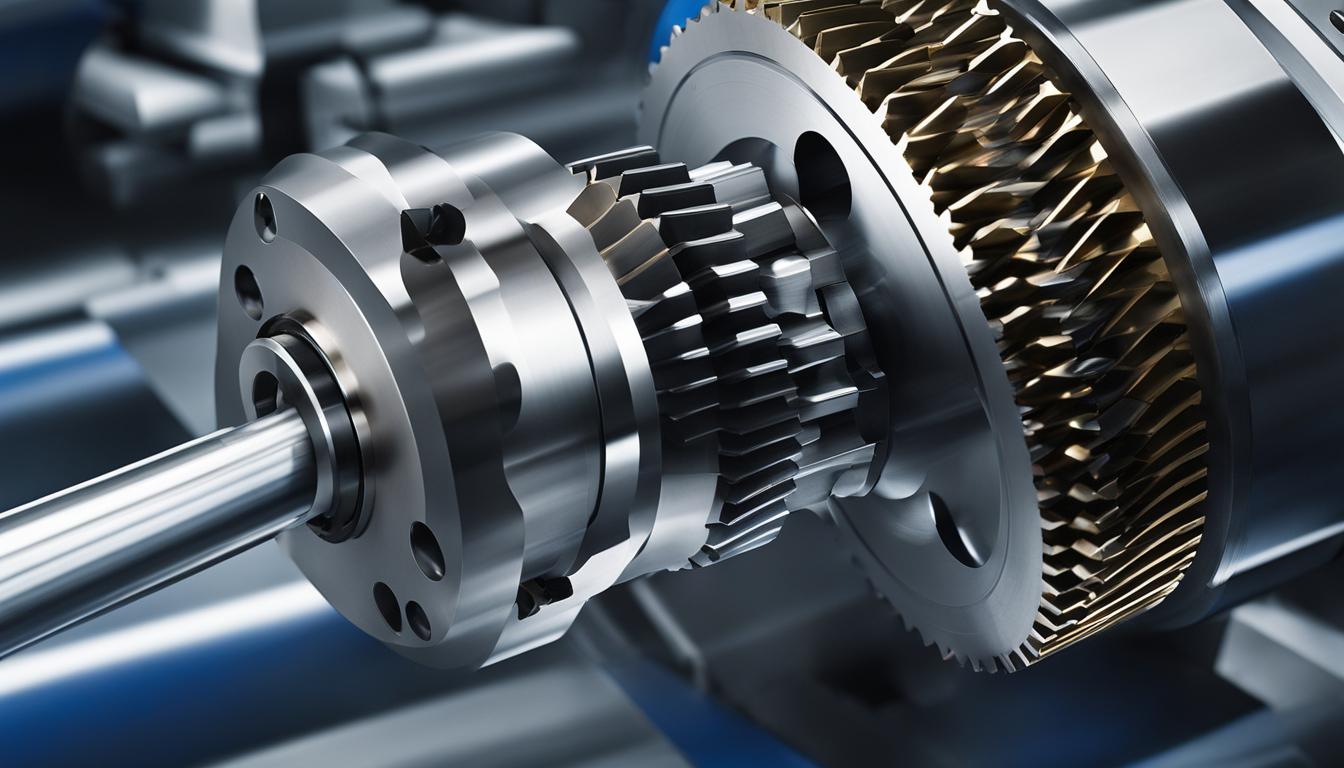A CNC spindle is the heart of a CNC machine, responsible for holding and rotating the cutting tool during machining operations. It functions as a high-precision motor that drives the tool at varying speeds, typically ranging from 1,000 to 30,000 RPM, depending on the specific application and material being worked. The spindle’s primary role is to provide the rotational force necessary for cutting, drilling, milling, or grinding operations. It consists of several key components, including bearings, a shaft, a tool holder, and a motor, all working in harmony to ensure smooth, accurate, and efficient machining processes.
The spindle’s performance directly impacts the quality of the finished product, as it influences factors such as surface finish, dimensional accuracy, and overall machining efficiency. Advanced CNC spindles often feature integrated cooling systems, automatic tool changers, and sophisticated control mechanisms to optimize performance and extend tool life. Understanding the function and capabilities of a CNC spindle is crucial for operators and engineers to maximize productivity and achieve high-quality results in CNC machining operations.
- A CNC spindle is an electrically or air-powered device that rotates on an axis to cut, slice, and refine materials in CNC machines.
- There are two main types of CNC spindles: integral motor spindles and belt-driven spindles, each with its own advantages.
- CNC spindles offer benefits like accuracy, versatility, durability, cost-effectiveness, and low maintenance.
- The choice of spindle depends on factors such as the application, CNC machine type, and materials being worked with.
- CNC spindles are widely used in industries such as automotive, aerospace, agriculture, and mold manufacturing.
Components of a CNC Spindle
A CNC spindle is comprised of several essential components that work together to ensure its proper functioning. Understanding these components is key to comprehending the intricate workings of a CNC spindle and its applications in machining.
Spindle Motor
The cnc spindle motor is a vital component that determines the speed, power, and stiffness of the spindle. There are different types of spindle motors, including belt-driven, gear-driven, and integral motor designs, each offering unique advantages depending on the specific machining requirements.
Spindle Housing
The spindle housing plays a crucial role in supporting the bearing arrangement and providing utility systems such as lubrication and cooling. It helps maintain the integrity and proper functioning of the spindle by ensuring that it remains stable during operation.
Spindle Shaft
The spindle shaft transfers rotational force from the drive system to the cutting tool. It is secured by bearings that facilitate smooth rotation and precise movement. The type of bearings used heavily influences the lifespan of the spindle, with angular contact ball bearings commonly used for high-speed units, and roller bearings for higher stiffness and load capacity.
Seals
Seals are crucial in preventing external contamination from entering the spindle. Contact and non-contact seals are commonly used to protect the internal components from dust, debris, and other contaminants that could potentially compromise the performance and longevity of the spindle.
Collet or Chuck
A collet or chuck is responsible for securely holding the cutting tool in place. It provides stability and ensures precise positioning, allowing for accurate cuts and shapes during machining operations.
Drawbar
The drawbar is a clamping mechanism that holds the collet or chuck in place. It provides the necessary force to tightly secure the cutting tool, preventing any movement or slippage during machining.
These components, along with others, work in synergy to enable the spindle to perform its critical function in CNC machining, delivering precise and efficient results.
Types of CNC Spindles
CNC spindles in CNC machines come in various types, each designed to meet specific machining requirements. They can be classified based on spindle orientation, tool holding mechanism, and power drive. Let’s explore these different types in detail:
Spindle Orientation
One classification of CNC spindles is based on their orientation:
- Vertical Spindles: Vertical spindles are commonly used in milling machines and drilling machines. They are ideal for tasks that require vertical movement, such as milling, drilling, and tapping.
- Horizontal Spindles: Horizontal spindles are typically used in lathes, boring machines, and grinding machines. These spindles are suitable for tasks that involve horizontal movement, such as turning and grinding.
Tool Holding Mechanism
Another way to categorize CNC spindles is based on their tool holding mechanism:
| Type of Spindle | Description |
|---|---|
| Collet Spindles | These spindles use collets to securely hold the cutting tools. They offer high gripping force and are commonly used in CNC milling machines. |
| Hydraulic Chucks | Hydraulic chucks use hydraulic pressure to clamp the cutting tools. They provide excellent tool runout accuracy and are widely used in precision machining applications. |
| Shrink Fit Tool Holders | Shrink fit tool holders use heat to expand the tool holder, allowing for a tight and secure grip on the cutting tool. They offer high precision and are popular in high-speed machining. |
| Weldon Tool Holders | Weldon tool holders have a cylindrical shape with a flat surface for tool clamping. They provide good stability and are commonly used in heavy-duty milling applications. |
| HSK Tool Holders | HSK (Hollow Shank Taper) tool holders provide a high level of rigidity and tool accuracy. They are widely used in high-speed machining applications. |
Power Drive
CNC spindles can also be categorized based on their power drive:
- Belt-Driven Spindles: Belt-driven spindles use belts to transfer power from the motor to the spindle. They offer cost-effectiveness and are suitable for various applications, including CNC milling and lathe machines.
- Direct-Drive Spindles: Direct-drive spindles directly couple the motor to the spindle shaft without using any gears or belts. They provide high power output, low noise, and excellent speed control.
- Air Turbine Spindles: Air turbine spindles use compressed air to rotate the spindle. They are known for their high rotational speed and are commonly used in high-speed machining applications.
- Hybrid Spindles: Hybrid spindles combine multiple power drive technologies, such as belt drive and direct drive, to provide a balance between speed, power, and accuracy.
Choosing the right type of CNC spindle depends on the specific machining requirements, material being worked with, and the desired outcome. For example, high-speed spindles are suitable for cutting materials like aluminum, wood, and composites, while spindles with lower speeds and more power are better suited for steel processing.

| Spindle Type | Application |
|---|---|
| Vertical Spindles | Milling machines, drilling machines |
| Horizontal Spindles | Lathes, boring machines, grinding machines |
| Collet Spindles | CNC milling machines |
| Hydraulic Chucks | Precision machining |
| Shrink Fit Tool Holders | High-speed machining |
| Weldon Tool Holders | Heavy-duty milling |
| HSK Tool Holders | High-speed machining |
| Belt-Driven Spindles | CNC milling, lathe machines |
| Direct-Drive Spindles | Various CNC applications |
| Air Turbine Spindles | High-speed machining |
| Hybrid Spindles | Various CNC applications |
Functions of CNC Spindles
In the world of machining, CNC spindles serve a wide range of functions that are critical to the overall performance and precision of CNC machines. These versatile tools perform various tasks such as milling, drilling, tapping, and turning. Whether it’s shaping metal parts, working with wood, or manufacturing intricate components, CNC spindles are capable of handling diverse applications.
One of the key advantages of CNC spindles is their ability to provide higher precision compared to manual operations. With advanced control systems and precision engineering, these spindles ensure consistent and accurate execution of tasks. They guarantee precise cuts, shapes, and finishes, resulting in high-quality products.
Additionally, CNC spindles contribute to increased speed and efficiency in machining processes. Their high rotational speeds allow for faster material removal, reducing production time significantly. By enabling CNC machines to operate at elevated speeds, spindles enhance productivity and overall throughput.
CNC spindles are integral components of CNC machines, enabling the execution of accurate tasks at high speeds. Their functionality directly impacts the overall machining results. Without reliable and well-functioning spindles, achieving the desired level of precision and performance would be challenging.
Across industries such as automotive, aerospace, and manufacturing, CNC spindles find widespread use due to their exceptional performance. They play a pivotal role in the production lines of various industries, ensuring the creation of quality products in a timely and cost-effective manner.
Overall, CNC spindles provide the foundation for successful machining operations, delivering precision, speed, and efficiency. They are indispensable tools that enable manufacturers to achieve their desired machining outcomes, making them a vital component in the world of CNC machining.
Importance of CNC Spindle in Precision Machining
When it comes to precision machining, CNC spindles are of utmost importance. They play a crucial role in ensuring the accuracy and reliability of the machining process. By utilizing CNC spindles, operators can achieve precise cuts, shapes, and finishes, resulting in consistent and high-quality products.
Compared to manual operations, CNC spindles offer a higher level of precision. This precision is vital in industries that require intricate detailing and tight tolerances. Whether it’s in the aerospace, automotive, or manufacturing sector, CNC spindles deliver the necessary precision to meet specific requirements.
One of the key advantages of CNC spindles is their ability to enable CNC machines to operate at high speeds. This increased speed enhances efficiency and productivity, allowing for faster production cycles. By harnessing the power of CNC spindles, manufacturers can meet tight deadlines and boost overall output.
CNC spindles find wide application in various precision machining processes, including CNC lathes and milling machines. They are essential for accomplishing intricate tasks that require utmost precision. CNC lathes, for example, rely on CNC spindles to execute precise turning operations, while CNC milling machines utilize spindles for accurate cutting and shaping.

Overall, the role and importance of CNC spindles in precision machining cannot be overstated. They deliver precise and repeatable results, making them an indispensable component in the realm of precision manufacturing.
| Benefits of CNC Spindles in Precision Machining |
|---|
| 1. Accurate and reliable cuts, shapes, and finishes |
| 2. Higher precision compared to manual operations |
| 3. Increased efficiency and productivity through high-speed operation |
| 4. Support for intricate tasks in CNC lathes and milling machines |
6. Maintenance and Repair of CNC Spindles
To ensure optimal performance and longevity, CNC spindles require regular maintenance and occasional repairs. Proper maintenance involves a series of measures such as cleaning, lubrication, and inspection of the spindle components to prevent breakdowns and ensure smooth operation.
If a CNC spindle experiences a malfunction or breakdown, it may necessitate repair or replacement. It is crucial to engage experienced professionals in a specialized environment to carry out CNC spindle repairs and rebuilds. This approach helps prevent further damage and ensures the spindle’s efficiency and effectiveness.
Spindle repair specialists offer various services to address spindle issues, including vibration analyses, bearing repairs, full replacements, and rebuilds. These experts possess the knowledge and expertise to handle CNC spindle units, lathe spindles, and milling spindles to resolve any problems that may arise.
Proper maintenance and timely repairs play a vital role in preventing disruptions to CNC machine operations and maintaining the overall efficiency of the spindle.
Choosing the Right CNC Spindle
When it comes to selecting a CNC spindle, it’s important to consider several factors in order to make the right choice. The application of the spindle, the type of CNC machine being used, and the materials being worked with all play a significant role in determining the most suitable spindle for your specific needs.
Different industries and machining processes have their own unique requirements, and as such, specific types of spindles may be better suited for certain applications. Consulting with experts and spindle specialists can provide valuable insights and guidance in selecting the optimal spindle for your needs.
When evaluating different CNC spindles, it’s essential to consider factors such as speed, power, torque, precision, and cost-effectiveness. These attributes will vary depending on the specific machining requirements of your application.
Having a clear understanding of your machining process and the capabilities of different types of spindles will help you make an informed decision. By taking into account these factors and consulting with experts, you can choose the right CNC spindle that will deliver optimal performance and efficiency for your application.
Applications of CNC Spindles in Various Industries
CNC spindles have revolutionized the manufacturing industry with their wide range of applications across various sectors. Let’s explore some of the industries where CNC spindles are commonly used:
Agriculture
In the agriculture industry, CNC spindles are employed for tasks such as precision cutting and shaping of components used in farming equipment. They enable the fabrication of durable and efficient machinery, contributing to increased productivity in the field.
Automotive
CNC spindles play a crucial role in the automotive industry, where precision and efficiency are paramount. They are utilized in the production of engine parts, chassis components, and other intricate automotive components.
Aerospace
In the aerospace industry, CNC spindles are employed for the machining of high-precision components used in aircraft engines, fuselage, and other critical parts. They offer the accuracy and reliability required for the demanding aerospace sector.
Mold Manufacturing
CNC spindles are extensively used in mold manufacturing, where intricate and precise machining is essential. They enable the production of precise molds used in various industries, such as automotive, consumer goods, and electronics.
Woodworking
In the woodworking industry, CNC spindles are utilized for tasks such as cutting, shaping, and carving wood to create various products, including furniture, cabinets, and decorative items. They ensure precise and intricate designs with enhanced efficiency.
Electrical Component Creation
CNC spindles are vital in the production of electrical components, such as circuit boards and connectors. They offer the necessary precision and speed required for manufacturing intricate electrical parts.
Computer Parts Manufacturing
In the computer industry, CNC spindles are used for the fabrication of computer components, including metal casings, cooling systems, and intricate internal parts. They contribute to the production of high-quality and reliable computer hardware.
CNC spindles are also employed in various other industries, including metalworking, plastic fabrication, precision machining, and more. Their versatility and efficiency make them indispensable tools for streamlining production processes and enhancing overall manufacturing quality.
Conclusion
CNC spindles are vital components in CNC machines, playing a critical role in precision machining. These spindles enable accurate cuts, shapes, and finishes, and offer high speed and efficiency. Two main types of CNC spindles are integral motor spindles and belt-driven spindles, each with its own advantages and suited for specific applications.
When choosing a CNC spindle, factors such as the application, CNC machine type, and materials being worked with need to be considered. Proper maintenance and timely repairs are crucial to ensure optimal performance and longevity of CNC spindles. CNC spindles are utilized in various industries, contributing to fast production processes and precision manufacturing.
In summary, CNC spindles are essential for achieving precision and efficiency in machining. By understanding the types of spindles and selecting the appropriate one for specific requirements, businesses can optimize their CNC operations and achieve reliable results.
